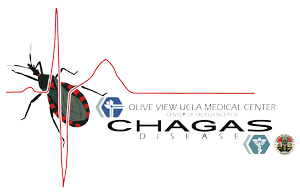
Lifecycle of the Parasite
Chagas disease is caused by the parasite Trypanosoma cruzi. This protozoan can live in humans, mammals (>100 species), and the triatomine bug, which is the insect vector that spreads T. cruzi infection from one host to another. The triatomine bug lives in Latin America. Mammals infected with T. cruzi have parasites that circulate through the blood in the form of trypomastigotes. When the triatomine bug bites a mammal and feeds on its infected blood, it ingests parasites that subsequently mature in the intestine before being eliminated in faeces. On biting the next mammal, the bug generally defecates near the site of the bite, allowing trypomastigotes in the faeces to enter the host through the wound, intact skin or mucous membranes, or the conjunctiva. Once in the host, the parasite will invade the cells around the site of entry and develop into an intracellular form known as an amastigote, which can cause both direct and indirect tissue damage. The amastigote then multiples, generating trypomastigotes, which are released into the blood, from where they infect other cells and tissues.

CENTER OF EXCELLENCE FOR CHAGAS DISEASE
FOLLOW US